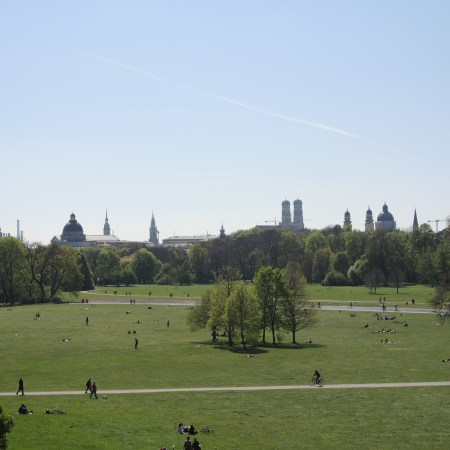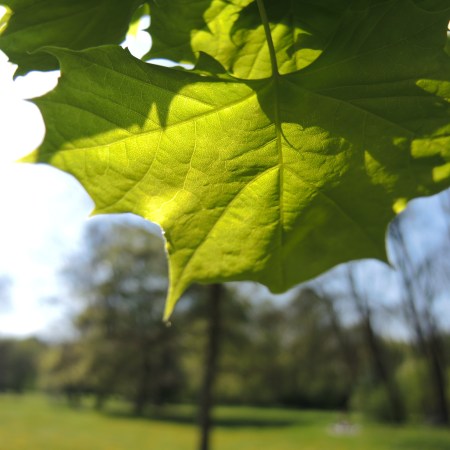Ecopolis Munich Exhibition/Stimmenspur
How Does the Englischer Garten Sound?
14.09.2017
This project by Vera Kovács and Katharina Müller, students of the RCC-LMU Environmental Studies Certificate Program, stems from research conducted as part of the exhibition project “Ecopolis: Understanding and Imagining Munich’s Environments.”

The English Garden. Photo Credit: Katharina Müller
As the first Volkspark in the world, a park open to all citizens,
the Englischer Garten has always been a place for encounters
between people and the environment.
With the audio experiment Stimmenspur (Sound Trail), we guide you
through these present-day relationships and their histories.
On an ecologically and historically mindful walk,
you can experience the environment with other ears and eyes.
Hear conversations with a landscape architect,
with the head of administration of the Englischer Garten,
with a yoga teacher, a street musician, and many others.
Let the natural acoustics of the Englisher Garten wash over you
as you form your own impressions of this wondrous space.
Download the German tour Stimmenspur free of charge and rediscover the Englischer Garten!
What we offer:
- The voices of people, animals, and plants in the park
- 3 hours of entertainment with scheduled breaks
- 21 amazing stations along a 5 km path
What you need:
- a sunny day
- a Smartphone/MP3 Player with headphones
- comfortable shoes
- a plastic bag for collecting trash

A mountain maple leaf in the English Garden. Photo Credit: Vera Kovács.
History of the Park
The creation of the Englischer Garten followed a strictly regulated layout.
Traces of this history are still detectable today.
In the style of an English landscape garden, it was created
on the Wittelsbach royal family’s former hunting grounds.
Count Rumford had the task
of looking after the poorly paid Bavarian soldiers.
In 1789 they began to cultivate potatoes, kohlrabi, and carrots.
In the years that followed, as a reaction to the French Revolution,
the military garden became a public park.
Since 1793, the southern part has been open to everybody.
Today the park is considered a natural monument and a work of art.
Friedrich Ludwig von Sckell (1750–1823) is the mastermind
behind the park’s layout and design.
Gently rolling meadows, noble clusters of trees, winding paths, and
buildings that create a visceral experience.
These features appear, disappear, reappear,
as if the landscape itself is inhaling and exhaling—lulling us into total relaxation.
Because of urbanization throughout the twentieth century,
the park became constricted and the construction of a street divided it into two.
Soon, however, the northern and southern parts will reunite,
heralding a new chapter in the park’s history.

Play of Colours. Photo Credit: Vera Kovács.

